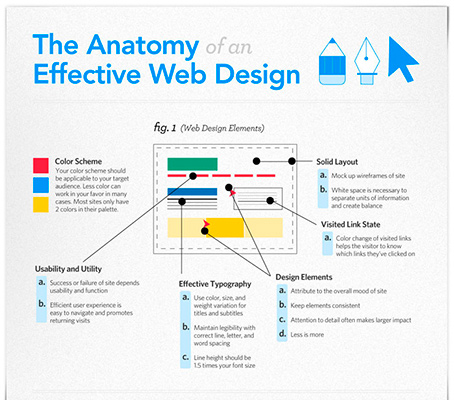Join Us As We Start A Trip With Time, Exploring The Advancement Of Website Layout And Exactly How It Has Affected The Digital Landscape
Join Us As We Start A Trip With Time, Exploring The Advancement Of Website Layout And Exactly How It Has Affected The Digital Landscape
Blog Article
Article Composed By-Carstens Bowles
In the past, sites were easy and focused on info. Navigation was straight, and layout was for desktop computers. Currently, user experience is key. Information guides designs for very easy navigating. Receptive designs fit various gadgets. seo for small companies , dark setting minimizes strain, and minimalist food selections enhance navigating. Interactive features engage customers, and bold visuals stand apart. AI assimilation enhances engagement. See exactly how style has actually evolved to enhance your on-line journey.
Early Days of Web Design
In the very early days of web design, simplicity reigned supreme. website designer near me were fundamental, with minimal colors, fonts, and layouts. The focus was on providing details instead of showy visuals. Individuals accessed the net via slow-moving dial-up links, so speed and functionality were key.
Navigation menus were straightforward, typically located on top or side of the web page. Sites were created for home computer, as mobile surfing wasn't yet prevalent. Content was king, and designers focused on simple readability over complicated design aspects.
HTML was the primary coding language made use of, and developers needed to function within its restraints. Computer animations and interactive features were minimal compared to today's requirements. Websites were static, with little dynamic material or customized customer experiences.
Rise of User-Focused Design
With the advancement of website design, a change towards user-focused style principles has become progressively popular. Today, producing internet sites that prioritize individual experience is critical for involving site visitors and achieving company objectives. User-focused layout entails recognizing the requirements, preferences, and behaviors of your target market to customize the web site's format, material, and includes accordingly.
Developers now conduct complete research, such as user surveys and use screening, to collect understandings and responses directly from customers. This data-driven technique helps in producing instinctive navigating, clear calls-to-action, and aesthetically enticing user interfaces that reverberate with site visitors. By positioning the individual at the facility of the design process, internet sites can supply a more customized and satisfying experience.
Receptive style has also emerged as a key aspect of user-focused layout, ensuring that internet sites are enhanced for different devices and display sizes. This flexibility enhances accessibility and usability, dealing with the diverse ways individuals engage with websites today. Fundamentally, the increase of user-focused design symbolizes a shift towards developing digital experiences that focus on the requirements and expectations of completion user.
Modern Trends in Website Design
Explore the most recent trends shaping web design today. One famous trend is dark setting design, using a sleek and modern look while minimizing eye pressure in low-light settings. An additional essential trend is minimalist navigating, simplifying menus and improving customer experience by concentrating on essential elements. Integrating micro-interactions, such as computer animated buttons or scrolling results, can produce a much more engaging and interactive site. Responsive layout remains important, guaranteeing seamless individual experiences throughout numerous tools. Additionally, using strong typography and unbalanced formats can include visual passion and draw attention to details content.
Incorporating AI innovation, like chatbots for consumer support or individualized recommendations, improves user interaction and streamlines processes. Availability has additionally end up being a significant fad, with designers focusing on inclusive style methods to cater to varied customer needs. Accepting sustainability by maximizing web site performance for rate and effectiveness is one more emerging trend in website design. Working together with individual comments and information analytics to repeat and enhance style continuously is vital for staying relevant in the ever-evolving electronic landscape. By embracing these modern-day trends, you can develop a visually enticing, easy to use web site that reverberates with your audience.
Conclusion
As you assess the advancement of internet site design from the very early days to now, you can see just how user-focused layout has come to be the driving pressure behind contemporary patterns.
Accept the trip of change and adjustment in website design, constantly keeping the individual experience at the leading edge.
Keep present with the most recent trends and innovations, and never quit advancing your strategy to produce visually stunning and straightforward web sites.
Progress, adjust, and produce - the future of web design remains in your hands.
